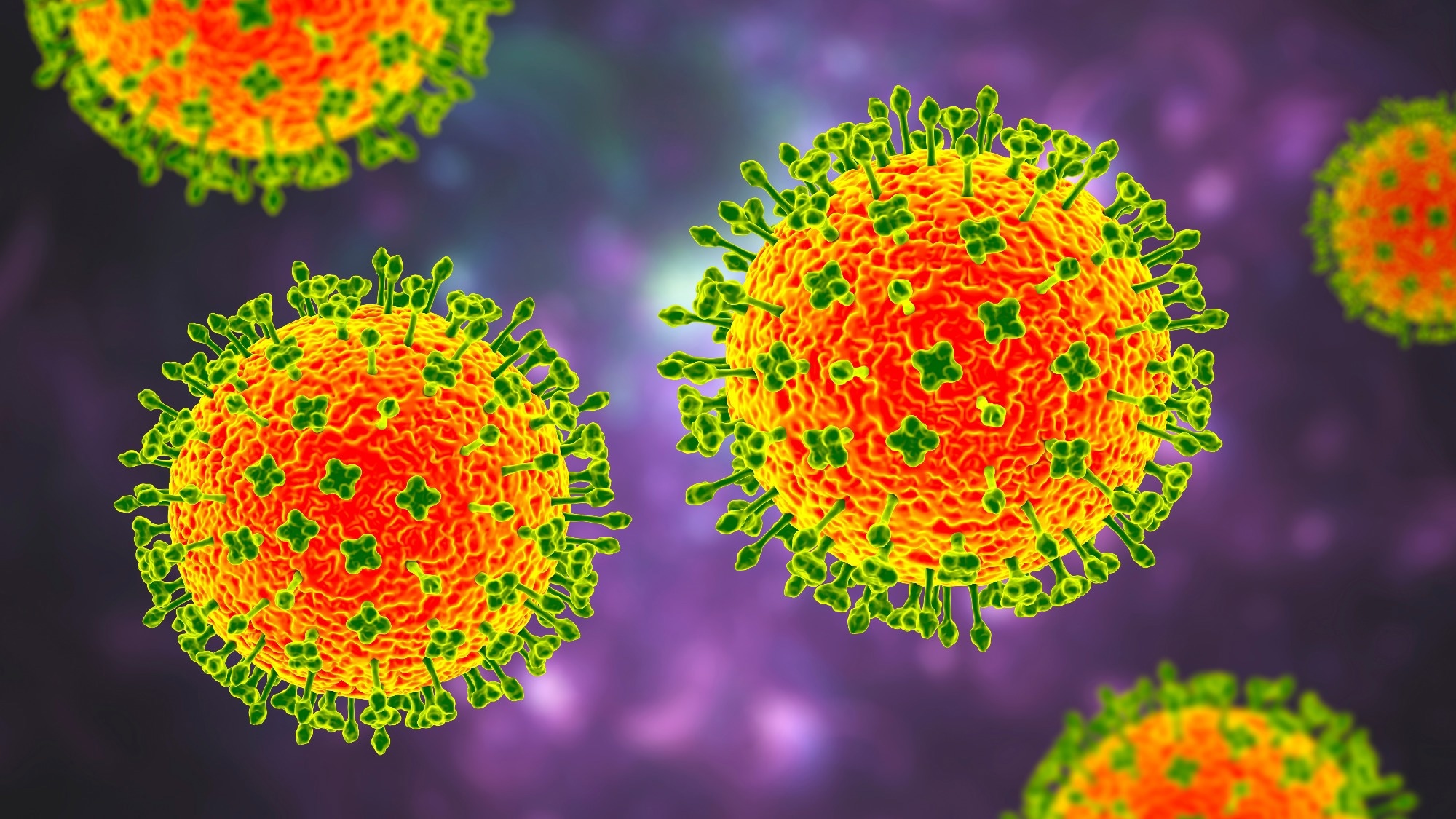In a recent study published in the journal PLOS One, researchers present the crystal structure of an anti-non-structural protein 9 (nsp) specific nanobody in complex with the severe acute respiratory syndrome coronavirus 2 (SARS-CoV-2) nsp9, which they termed nsp9COV19.
 Study: Inside-out: Antibody-binding reveals potential folding hinge-points within the SARS-CoV-2 replication co-factor nsp9. Image Credit: Kateryna Kon / Shutterstock.com
Study: Inside-out: Antibody-binding reveals potential folding hinge-points within the SARS-CoV-2 replication co-factor nsp9. Image Credit: Kateryna Kon / Shutterstock.com
Background
Nsp9 is a small accessory factor that plays a crucial role in the coronavirus (CoV) replication and replication transcription complex (RTC). Moreover, nsp9 associates with the N-terminal pseudokinase Nidovirales ribonucleic acid (RNA)-dependent RNA polymerase (RdRp) associated nucleotidyltransferase domain (NiRAN) of nsp12, which is produced inside host cells as a self-cleaving PP1ab polyprotein.
Nsp12 contains an essential viral RdRp which, jointly with nsp7 and nsp8, becomes the RTC core components. Nsp9 has a distinct viral fold, RNA-binding protein, and key element for viral messenger RNA (mRNA) capping. This protein also recruits other proteins for viral 5’-mRNA capping, which is an essential aspect of viral replication, thus making nsp12 a potentially viable therapeutic target.
In the SARS-CoV-2 capping model, the nsp9 and NiRAN domain act jointly as a polyribonucleotidyltransferase (PRNTase) with catalytic and adduct-accepting residues on different amino acid chains.
VHHs are camelid immunoglobulins (Ig)-derived nanobodies with variable heavy domains. Previous studies have shown that these nanobodies could be highly specific for nsp9. Likewise, several studies have identified many small molecules with affinity for nsp9COV19 and the potential to inhibit NiRAN engagement and, as a result, prevent SARS-CoV-2 RNAylation and capping.
About the study
In the present study, researchers describe the flexibility of nsp9. To this end, nsp9 and anti-nsp9 VHH2nsp23 complex were purified and co-complexed on gel filtration. Thereafter, the crystal structure of this complex was examined at a resolution of 2.4Å using X-ray diffraction.
After many rounds, the team finally built and refined a crystal structure of the VHH2nsp23-bound state of nsp9COV19, which had two copies of the nsp9COV19: VHH2nsp23 complex within the asymmetric unit overlay.
Transformation-related protein 53 (Trp-53) was found to be a primary feature of the extensive antibody-binding interface of nsp9COV19, in which the CDR3-loop formed an extended β-sheet interaction. Nanobody binding triggered large-scale topological changes to the unique coronaviral fold of nsp9, which distorted all NiRAN-interacting elements of nsp9.
However, it remains unclear whether VHH binding artificially induced this binding state or whether it was an alternative pre-existing structural state or folding intermediate that remained trapped inside nsp9.
A Kleywegt plot was used to explore potential points of flexibility within the nsp9 fold and compare bound and unbound states of nsp9COV19. Ramachandran distances were also mapped between each state onto the nsp9COV19 structure.
Results
The VHH2nsp23 binding site on nsp9COV19 was extensive, in which residues within the VHHCDR2 and VHHCDR3 loops constituted 27% and 66% of the binding interface, respectively.
The VHHCDR3 residues 103YYFST107 ran antiparallel with the nsp9COV19 s5-strand and formed four β-sheet hydrogen (H)-bonds. These residues also established backbone-sidechain interactions with VHHThr-107. Additionally, the VHHCDR2 loop of VHH2nsp23 contributed substantial contacts that were entirely backbone-sidechain mediated.
Trp-53 of nsp9COV19 was clamped betweenVHHMet-50 and VHHIle-52, both of which are hydrophobic residues. Together, eight epitope-specific H-bonds, multiple van der Waals interactions, and one salt bridge contributed to the anti-nsp9COV19specificity of VHH2nsp23.
After VHH binding, the authors noted that the native unliganded form of nsp9COV19 underwent some structural rearrangements. To this end, α-helix repositioning from outside the mini β-barrel and in between the s2-s3 and s4-s5 loops stationed 30Å apart was observed. Nevertheless, most of the β-structural elements of nsp9COV19 remained topologically nearby in the bound state.
Other structural points within the nsp9 fold that might be serving as hinge points were also identified. Leu-42, for example, resided and formed a standard straight β-strand in the VHH2nsp23-bound state, while in the apo state, Leu-42resided at a kink-point, thus allowing s3 to turn away from αC. Largescale movement of αC was mainly facilitated by backbone shifts in residues Lys-92/Gly-93, which VHH2nsp23 directly contacted.
During viral 5’ mRNA-capping, the N-terminus of nsp9COV19 inserts into the nsp12 NiRAN domain, which is mediated through traits of the apo-nsp9 fold. These traits include the GxxxG interaction motif and N-terminus projecting into its active site.
This new conformational state of the s2-s3 loop and realigned αC distorted elements engaged
Conclusions
The binding epitope VHH2nsp23 was defined by resolving its crystal structure with nsp9COV19. As previously indicated in nuclear magnetic resonance (NMR) chemical peak perturbation assays, the VHH2nsp23 epitope appeared to be targeting residues within the s4 and s5 strands of nsp9 and focused specifically upon Trp-53. Additional structural rearrangements gave rise to the VHH2nsp23-bound architecture of nsp9COV19.
This new VHH2nsp23-bound state of nsp9 might appear physiologically irrelevant at present. However, its formation allowed more freedom for the nsp9 N-terminus following the loss of the Tyr-cradle. This structure also had several structural points within the nsp9 distinct fold that might be acting as hinge points. Therefore, despite occurring at a site farther away from the NiRAN-interaction site, these structural changes could disrupt a protein interface.
This novel VHH-bound state of nsp9COV19 cryptically encasing the C-terminal α-helix of nsp9 should be investigated as a potential COVID-19 therapeutic, as it was shown to limit NiRAN engagement, which may prevent SARS-CoV-2 RNAylation and 5’mRNA capping.
Journal reference:
- Pan, Y., Chandrasekharan, I. R., Tennant, L., et al. (2023). Inside-out: Antibody-binding reveals potential folding hinge-points within the SARS-CoV-2 replication co-factor nsp9. PLoS One. doi:!0.1371/journal.pone.0283194

